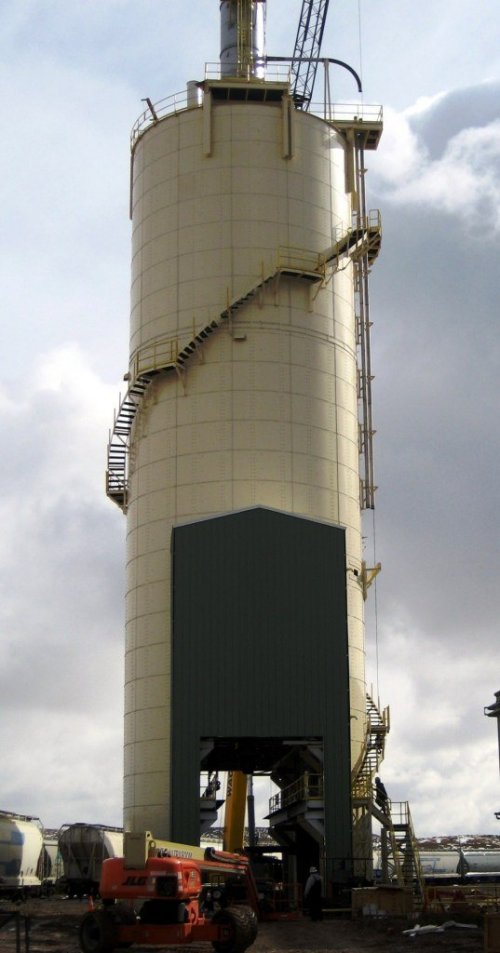Silo selection for super storage
Tuesday, 02 August, 2011
In dry bulk storage, quality and value drive today’s silo selection process. With advances in fabrication technology, engineering design, coating processes and field construction techniques, some storage products utilised in the past have become outdated, while other products have pushed to the front of the line in product development and field performance.
The process of selecting a dry bulk storage silo starts with a series of questions that require answers before proceeding.
The top 10 considerations are:
- How much material will be stored Â… tons/cubic feet?
- Are there any unique characteristics of the stored material to consider?
- What materials of construction should be used?
- What product density should be used for volume and design calculation?
- Is material degradation a concern?
- Is material segregation a concern?
- What type of material discharge pattern is preferred or required for the application (funnel flow, mass flow, expanded flow, etc)?
- Is a hopper flow aid device required for reliable discharge?
- Should my material be tested by a ‘flow specialist’?
- Do I need a reliable performance guarantee from the silo supplier?
You don’t need to have all the answers, but you do need to know a reliable storage specialist who can advise you in these areas.

Especially as choice of the appropriate high-quality storage product can offer significant benefits in the form of extended service life, low maintenance and cost savings generated over its service life.
Bill Neighbors, President of Tank Connection in the US, claims that the bolted RTP design is the top performance product offered worldwide in the industry today.
“It is the premier product and it is outdating other types of bolted tank construction,” he said.
David Baker, from The Tasman Tank Company, went on to explain that one of the biggest advantages of the bolted RTP dry bulk storage silos is the fact they can be constructed in the field in less than half the time required for field-weld construction.

“With a welded silo, for example, you need to bring in large cylindrical sections and weld them on site, whereas all our panels are easily managed.”
Baker said bolted steel silos have steadily overtaken alternatives because they are less expensive to build in the first place, plus they are cheaper and easier to maintain and typically outlast many alternative materials.
“While steel silos might show signs of deterioration from the outside coating after decades of use, steel corrodes from the outside so the coating and the corrosion can be easily repaired to avoid ongoing problems.
“It is very different with some silos where corrosion cannot often be detected prior to a complete failure.”
He said occupational health and safety on the work site is another major consideration with the modular bolted steel systems.
“Everything is hydraulically jacked from the floor up as we build the silo, including the silo’s roof which is built at ground level.
“Unlike other storage systems, we don’t have to build scaffolding, so there is minimal disturbance to the rest of the building as far as construction is concerned,” Baker said.
Large-scale mixing plant for flavour production
GEA is building a new large-scale mixing plant to increase capacity of flavour ingredients...
Pure Dairy opens manufacturing plant in Dandenong South
Pure Dairy has opened its new 13,000 m2 dairy manufacturing facility in...
Manufacturing most impacted by ransomware in Q1 2025
Industrial ransomware incidents are on the rise — with food and beverage manufacturing...











